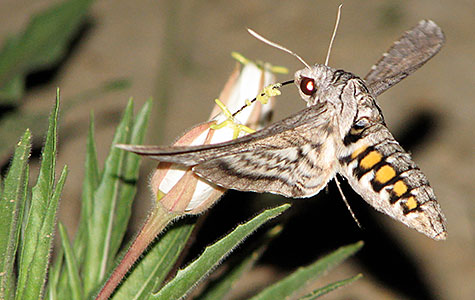
New research by Garden scientists offers hope for plants growing in human-altered landscapes. The ability of organisms to move across a landscape is an important part of dealing with change. For example, this ability to move—or disperse—allows plants and animals to deal with human-altered land-use change, such as urban development, agriculture, and grazing. For plants, the ability to disperse from one habitat to another occurs via the movement of pollen and seeds, which involves the help of pollinators and seed dispersers. In a paper published this week, scientists Krissa Skogen, Ph.D., and Jeremie Fant, Ph.D., investigated whether dispersal of evening primrose was disrupted by human-altered land-use change. They addressed this issue by combining molecular genetic data with detailed pollinator observations across 21 populations of evening primrose in Colorado. They found that despite urban development, agriculture, and grazing, the long-distance movement of pollen by the evening primrose’s pollinator—night-flying hawkmoths—was not disrupted. Hawkmoths are known to fly up to 20 miles in just one night and it has been suspected that they have the potential to move pollen over great distances. “This work is incredibly exciting because it offers hope for plant species that are pollinated by animals that can travel over great distances. As long as those pollinators can still make the trip between populations, the plants themselves stand a chance of surviving and persisting into the future” says lead author Dr. Krissa Skogen. The research was funded by the National Science Foundation and Colorado Native Plant Society. Read the full article published in the Annals of the Missouri Botanical Garden.
Photo: A five-spotted hawkmoth (Manduca quinquemaculata) drinks nectar from an Arkansas River Valley evening primrose (Oenothera harringtonii) flower. Note the pollen stuck to its tongue (proboscis). Photo credit: K. Skogen

